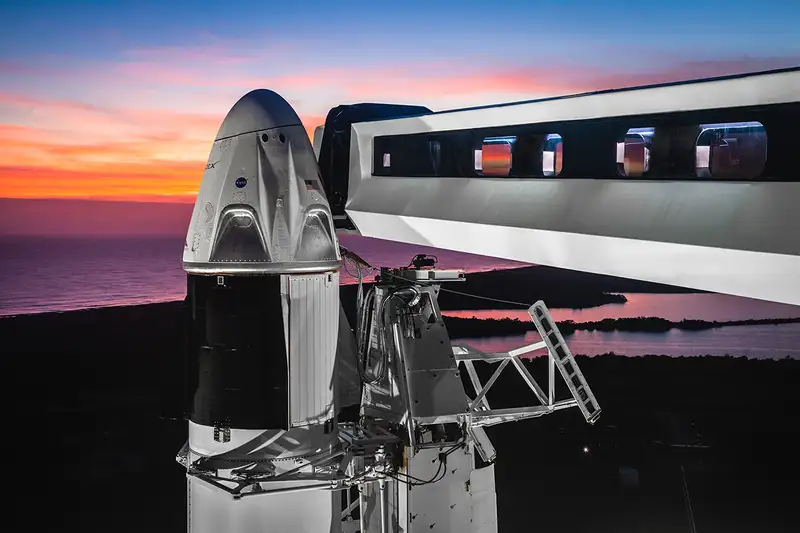SpaceX is poised for its next crewed liftoff.
The company remains on target to launch the private Ax-3 mission to the International Space Station (ISS) on Wednesday (Jan. 17) from NASA’s Kennedy Space Center in Florida as planned.
“We’re happy to say that we’re on track — we’re ready,” Benji Reed, senior director of human spaceflight programs at SpaceX, said during a call with reporters on Tuesday evening (Jan. 16). The weather looks good as well; there’s a greater than 95% chance that Mother Nature will cooperate, allowing an on-time liftoff, mission team members said during the telecon.
Ax-3 has not yet been officially cleared for liftoff, however. That milestone should come tomorrow, when teams from SpaceX, NASA and the Houston company Axiom Space perform a launch readiness review (LRR) for the mission.
Provided the LRR goes well, a Falcon 9 rocket will send the four Ax-3 astronauts skyward aboard a Dragon capsule on Wednesday at 5:11 p.m. EST (2211 GMT). You can watch the action live here at Space.com courtesy of NASA; the agency’s coverage will begin at 4:15 p.m. EST (2115 GMT).
Ax-3, which will be managed by Axiom Space, will send four people to the ISS for a roughly two-week stay.
Those crewmembers are mission commander Michael López-Alegría, a former NASA astronaut who now works for Axiom; Col. Walter Villadei of the Italian Air Force; European Space Agency astronaut Marcus Wandt; and Alper Gezeravcı, who will become the first citizen of Turkey ever to reach space.
López-Alegría also commanded the Ax-1 mission to the orbiting lab, which launched in April 2022. Axiom’s second flight to the ISS, Ax-2, launched in May 2023 and was led by former NASA astronaut Peggy Whitson, who has spent more total time in space (675 days) than any other American. (NASA requires that all private crewed missions to the ISS be led by a former agency astronaut.)
The Ax-3 astronauts will perform more than 30 science experiments during their time aboard the ISS, according to Axiom Space.
“Data collected on ground before and after the mission as well as in flight will impact understanding of human physiology on Earth and on orbit, as well as advance scientific understanding, harness opportunities for industrial advancements and develop technologies for humanity’s progress,” the company wrote in a mission description.
Credit: Space.com



